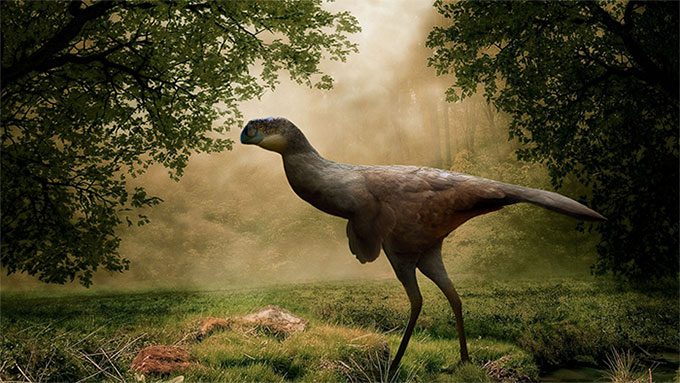Chinese Scientists Identify a Previously Unknown Species from Two Cretaceous Fossils
According to Sci-News, the remains of two strange creatures were excavated from the Maortu Fossil Site in the Miaogou Formation in Chilantai, western Inner Mongolia, China.
The specimens were analyzed by a research team from the Chinese Academy of Sciences and Yunnan University, and were subsequently identified as a completely new species.

The strange creature Yuanyanglong bainian is a feathered dinosaur – (Graphic: Ddinodan).
The new species has been named Yuanyanglong bainian.
In the reconstruction images by the research team, it resembles a bizarre hybrid between an ostrich and a large mammal, featuring a reptilian head but a beak like that of a bird.
However, it is actually a dinosaur that lived approximately 110 million years ago, during the Cretaceous period.
It belongs to the feathered dinosaur family known as Oviraptorosauria, which once inhabited areas that are now part of Asia and North America, with over 40 genera having been named.
Yuanyanglong bainian has been classified as a new species due to its distinct short skull compared to other species within the same family, as well as several unique features in its pelvis.
It also exhibits a combination of unique characteristics from previously known branches of Oviraptorosauria.
Notably, the fossils also include stomach stones, which assist in grinding food, similar to the way some modern birds do.
These features make the new specimen particularly valuable: it not only fills a gap in the evolutionary history of the Oviraptorosauria family, providing connections between different species, but also shows a deep relationship with modern birds.
Birds are known to have evolved from dinosaurs and retain many characteristics of these ancient creatures. Therefore, scientists sometimes refer to birds as a form of “modern-day dinosaurs.”
The study of this new species has just been published in the scientific journal Cretaceous Research.


















































